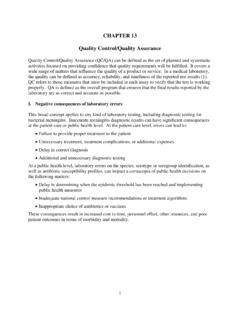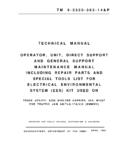Transcription of MACHINERY SAFEBOOK 5 - Rockwell Automation
1 safety related controlsystems for machineryPrinciples, standards and implementation(Revision 5 of the SAFEBOOK series) MACHINERY SAFEBOOK 5 MACHINERY SAFEBOOK 5 safety related control systems for machinery1 ContentChapter 1 Regulations 2EU Directives and Legislation, The MACHINERY Directive, The Use of Work Equipment Directive, Regulations, Occupational safety and Health Administration, Canadian RegulationsChapter 2 Standards 18 ISO (International Organisation for Standardisation), IEC (International Electrotechnical Commission), EN Harmonised European Standards, Standards, OSHA Standards, ANSI Standards, Canadian Standards, Australian StandardsChapter 3 safety Strategy 22 Risk Assessment, Machine Limit Determination, Task and Hazard Identifi cation, Risk Estimation and Risk Reduction, Inherently safe design, Protective systems and measures, Evaluation, Training, personal protective equipment, StandardsChapter 4 Implementation of Protective Measures 34 Prevention of Unexpected Start-Up, Lockout / Tagout, safety Isolation Systems, Preventing Access, Fixed Enclosing Guards, Detecting Access and safety Technologies and SystemsChapter 5 safety Distance Calculation 56 Formulas.
2 Guidance and application of safety solutions utilising safety distance calculations for safe control of potentially hazardous moving 6 safety Related Control Systems & Functional safety 60 Introduction, What is Functional safety ? IEC/EN 62061 and (EN) ISO 13849-1:2008, SIL and IEC/EN 62061, PL and (EN) ISO 13849-1:2008, Comparison of PL and SILC hapter 7 System Design According to (EN) ISO 13849 66 SISTEMA, safety System Architectures (Structures), Mission Time, Mean Time to Dangerous Failure (MTTFD), Diagnostic Coverage (DC), Common Cause Failure (CCF), Systematic Failure, Performance Level (PL), Subsystem Design and Combinations, Validation, Machine Commissioning, Fault ExclusionChapter 8 System Design According to IEC/EN 62061 87 Subsystem Design - IEC/EN 62061, Affect of the Proof Test Interval, Affect of Common Cause Failure Analysis, Transition methodology for Categories, Architectural Constraints, B10 and B10d, Common Cause Failure (CCF), Diagnostic Coverage (DC), Hardware Fault Tolerance, Management of Functional safety , Probability of Dangerous Failure (PFHD)
3 , Proof Test Interval, Safe Failure Fraction (SFF), Systematic FailureChapter 9 safety -Related Control Systems, Additional Considerations 98 Overview, Categories of Control Systems, Undetected Faults, Component and System Ratings, Fault Considerations, Fault Exclusions, Stop Categories According to IEC/EN 60204-1 and NFPA 79, safety Control System Requirements, Robot Standards: and CanadaChapter 10 Application Examples 110 Application example of how you could use SISTEMA Performance Level Calculator tool with Rockwell Automation SISTEMA product 11 Products, tools and services 138 Products, technologies, tools and services available from Rockwell SAFEBOOK 5 safety related control systems for machinery2 Chapter 1: RegulationsEU Directives and LegislationThe purpose of this section is to act as a guide for anyone concerned with machine safety especially guarding and protective systems in the European Union.
4 It is intended for designers and users of industrial order to promote the concept of an open market within the European Economic Area (EEA) (which comprises all EU Member States plus three other countries) all member states are obliged to enact legislation that defi nes essential safety requirements for MACHINERY and its that does not meet these requirements cannot be supplied into or within EEA are several European Directives that can apply to the safety of industrial MACHINERY and equipment but the two that are of the most direct relevance are:1 The MACHINERY Directive2 The Use of Work Equipment by Workers at Work DirectiveThese two Directives are directly related as the Essential Health and safety Requirements (EHSRs) from the MACHINERY Directive can be used to confi rm the safety of equipment in the Use of Work Equipment section deals with aspects of both directives and it is strongly recommended that anyone concerned with the design, supply, purchase or use of industrial equipment within or into the EEA and also certain other European countries should familiarize themselves with their requirements.
5 Most suppliers and users of MACHINERY will simply not be allowed to supply or operate MACHINERY in these countries unless they conform to these are other European Directives that may have relevance to MACHINERY . Most of them are fairly specialized in their application and are therefore left outside the scope of this section but it is important to note that, where relevant, their requirements must also be met. Examples are: The EMC Directive 2014/30/EC and the ATEX Directive 2014/34 SAFEBOOK 5 RegulationsThe MACHINERY DirectiveThe MACHINERY Directive covers the supply of new MACHINERY and other equipment including safety components. It is an offense to supply MACHINERY within the EU unless the provisions and requirements of the Directive are broadest defi nition of MACHINERY given within the Directive is a follows: an assembly, fi tted with or intended to be fi tted with a drive system other than directly applied human or animal effort, consisting of linked parts or components, at least one of which moves, and which are joined together for a specifi c applicationThe current MACHINERY Directive (2006/42/EC) replaced the former version (98/37/EC) at the end of 2009.
6 It clarifi es and amends but does not introduce any radical changes to its Essential Health and safety Requirements (EHSRs). It does introduce some changes to take account of changes in technology and methods. It extends its scope to cover some extra types of equipment ( construction site hoists). There is now an explicit requirement for a risk assessment for the determination of which EHSRs are applicable and there are changes made to the conformity assessment procedures for Annex IV information and guidance on the defi nition and all other aspects of the MACHINERY Directive can be found at the offi cial EU website: key provisions of the original Directive (98/37/EC) came into force for MACHINERY on January 1, 1995 and for safety Components on January 1, provisions of the current Directive (2006/42/EC) became applicable on December 29, 2009.
7 It is the responsibility of the manufacturer or his authorized representative to ensure that equipment supplied is in conformity with the Directive. This includes: Ensuring that the applicable EHSRs contained in Annex I of the Directive are fulfi lled A technical fi le is prepared Appropriate conformity assessment is carried out An EC Declaration of Conformity is given CE Marking is affi xed where applicable Instructions for safe use are providedCE marking affi xed to machineMACHINERY SAFEBOOK 5 safety related control systems for machinery4 Essential Health & safety RequirementsAnnex 1 of the Directive gives a list of Essential Health and safety Requirements (referred to as EHSRs) to which MACHINERY must comply where relevant. The purpose of this list is to ensure that the MACHINERY is safe and is designed and constructed so that it can be used, adjusted and maintained throughout all phases of its life without putting persons at risk.
8 The following text provides a quick overview of some typical requirements but it is important to consider all of the EHSRs given in Annex 1. A risk assessment must be carried out to determine which EHSRs are applicable to the equipment under EHSRs in Annex 1 provides a hierarchy of measures for eliminating the risk:(1) Inherently Safe Design. Where possible the design itself will prevent anyhazards. Where this is not possible (2) Additional Protection Devices, ,Guards with interlocked access points, non-material barriers such as light curtains,sensing mats etc. should be used. Any residual risk which cannot be dealt with bythe above methods must be contained by (3) Personal Protective Equipment and/or Training. The machine supplier must specify what is materials should be used for construction and operation.
9 Adequate lighting and handling facilities should be provided. Controls and control systems must be safe and reliable. Machines must not be capable of starting up unexpectedly and should have one or more emergency stop devices fi tted. Consideration must be given to complex installations where processes upstream or downstream can affect the safety of a machine. Failure of a power supply or control circuit must not lead to a dangerous situation. Machines must be stable and capable of withstanding foreseeable stresses. They must have no exposed edges or surfaces likely to cause or protection devices must be used to protect risks such as moving parts. These must be of robust construction and diffi cult to bypass. Fixed guards must be mounted by methods that can only be removed with tools, and the fi xings should be captive.
10 Movable guards should be interlocked. Adjustable guards should be readily adjustable without the use of must meet EHSRs5 MACHINERY SAFEBOOK 5 RegulationsElectrical and other energy supply hazards including stored energy, must be prevented. There must be minimal risk of injury from temperature, explosion, noise, vibration, dust, gases or radiation. There must be proper provisions for maintenance and servicing. Suffi cient indication and warning devices must be provided. MACHINERY shall be provided with instructions for safe installation, use, adjustment AssessmentThe designer or other responsible body must be able to show evidence that proves conformity with the EHSRs. This fi le should include all relevant information such as test results, drawings, specifi cations, harmonized European (EN) Standard that is listed in the Offi cial Journal of the European Union (OJ) under the MACHINERY Directive, and whose date of cessation of presumption of conformity has not expired, confers a presumption of conformity with certain of the EHSR s.











